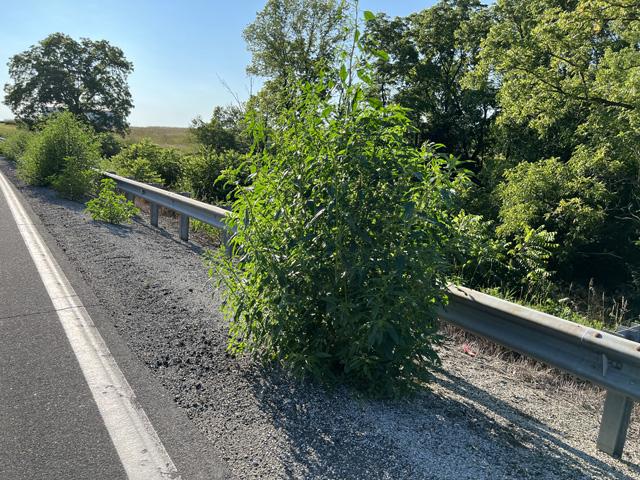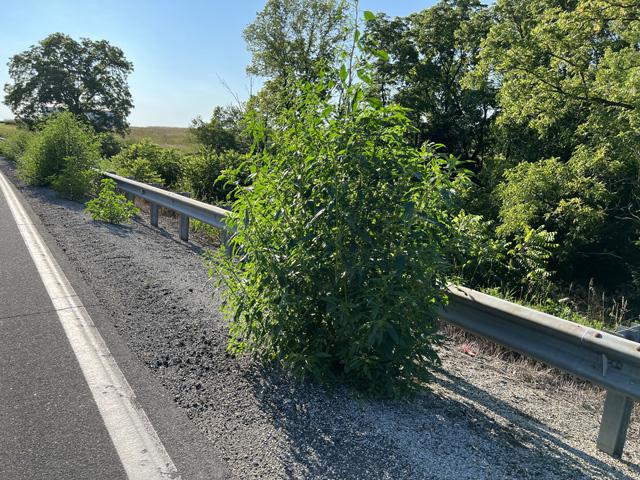Production Blog
Palmer in the Pavement
When Palmer amaranth started gaining a foothold in the South years ago, I took a trip to see if the horror stories about the wicked weed were true. They were.
I remember one of the more colorful Midsouth farmers telling me that the darn weed was so stubborn it could grow out of concrete. And, by golly, he was right. In a cloverleaf intersection near downtown Memphis, I spotted a pigweed proudly growing from an overpass. I dang near made myself sick driving around the highway loop trying to figure a way to photograph that bad boy (or girl -- pigweeds do have gender). I never did get the image.
I've seen plenty of Palmer since and it hasn't hesitated to cross state lines. Illinois, where I live, has uncomfortably healthy populations scattered about. I've abandoned more than a few pair of boots and shoes after visiting those sites. So far, I've never found it close to my central Illinois home.
Yesterday, I was sure I'd found it. I came to a skidding stop along a county highway where a weed big enough to qualify as a small Christmas tree waved at me. The car behind me was not nearly as friendly about my abrupt halt. I definitely need to get a "this vehicle stops for pictures" warning sign.
P[L1] D[0x0] M[300x250] OOP[F] ADUNIT[] T[]
I always grab a leaf when I'm suspicious that it might be Palmer. The simplest test to distinguish between Palmer and other pigweeds is to look at petiole length. The leaf petiole (the part that connects the leaf to the stem) is often longer than the leaf blade. But be careful where you are plucking -- this petiole test holds true for the older leaves of Palmer but not always the youngest leaves near the top of the plant.
This week I revisited some of the other telltale characteristics of Palmer and how to sort it from other pigweeds.
One clue is the leaf arrangement of Palmer is often compared to a poinsettia in appearance. Palmer leaves tend to be more rounded, compared to the longer and narrower leaf of waterhemp. The Palmer plant is smooth with no hairs on stems or leaves. Read the entire post for more clues: https://www.dtnpf.com/….
Whew. My impromptu stop turned out to be an uncommonly large specimen of common waterhemp. At least it seemed uncommon, considering it was growing straight out of gravel.
Unsure as to whether you have the correct plant identification? Some diagnostic labs can help. There are often proper sampling techniques and charges for the services, especially if the plant is being screened for resistance to herbicides. However, as University of Illinois weed scientist Aaron Hager often points out, understanding what you are dealing with is far less costly on the front end than letting these aggressive weeds gain a foothold.
A searchable directory of plant diagnostic clinics by state is available from the National Plant Diagnostic Network: https://www.npdn.org/….
Purdue University has a video outlining Palmer amaranth identification: https://www.youtube.com/….
Pamela Smith can be reached at pamela.smith@dtn.com
Follow her on Twitter @PamSmithDTN
(c) Copyright 2022 DTN, LLC. All rights reserved.






Comments
To comment, please Log In or Join our Community .